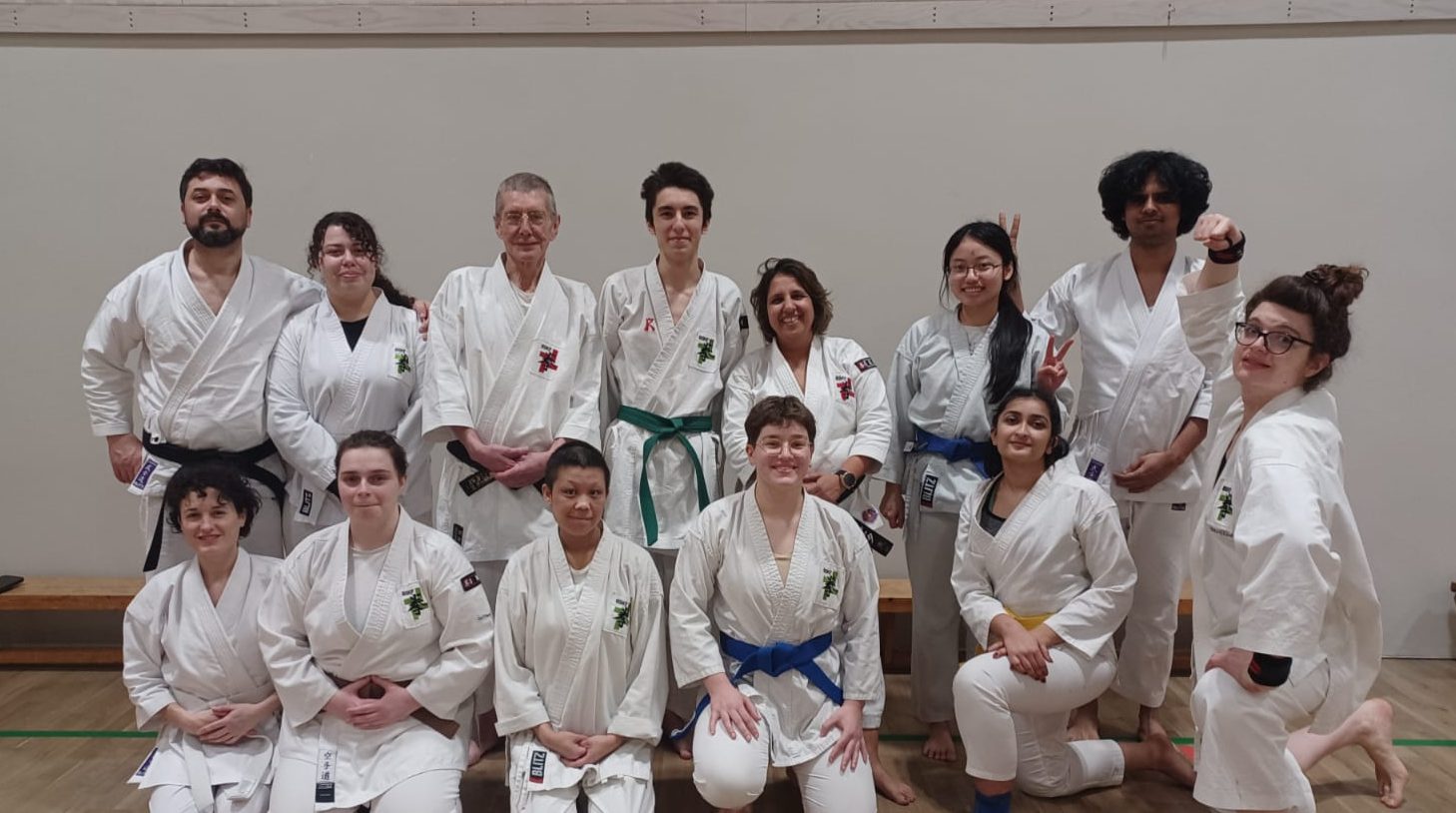Embu (演武) – The Waltz of Warriors
Embu isn’t just about demonstrating techniques—it’s about movement with meaning, precision with flair, and martial arts with partnership. Think of it as a perfectly timed waltz, but with strikes, counters, and locks instead of ballroom twirls. Whether performed for gradings or tournaments, Embu refines Kenshi’s ability to execute techniques with accuracy, control, and fluidity—making it an essential part of the Camden Shorinji Kempo experience.
Why Embu is an Essential Part of Shorinji Kempo
Embu is more than choreography; it’s strategy, timing, and trust in action. Each movement is intentional, helping Kenshi perfect their strikes, locks, and defensive techniques, while flowing seamlessly with their partner.
It teaches self-defence principles in a structured way, reinforcing how techniques connect in real-world applications. But it’s also about discipline and focus—executing Embu requires control, awareness, and precision, sharpening both body and mind.
Then there’s Kumi Embu, where two Kenshi work together with laser focus and mutual understanding. It’s the ultimate partnership exercise, requiring timing so sharp it feels telepathic. To succeed in Kumi Embu, you don’t just learn your own moves—you learn your partner’s reactions, rhythm, and flow. This connection builds deep trust between Kenshi, where every movement is calculated, coordinated, and performed with confidence.
And let’s not forget the elegance of it all—because in Japanese, “Embu” can also translate to “waltz,” highlighting the synchronisation and rhythm required between Kenshi. It’s martial arts with artistry, a demonstration of both skill and harmony in movement.
Embu for Gradings
Gradings in Shorinji Kempo aren’t just about proving knowledge—they’re about showing progress, adaptability, and technique under pressure.
For Kyu grades, Embu follows set sequences, ensuring Kenshi learn fundamental accuracy, control, and form within their syllabus. Each technique has purpose, reinforcing proper execution.
For Dan grades, Kenshi have more freedom—Embu becomes free-form, allowing for expression, adaptability, and creativity. Movements become a conversation between skill and instinct, showing not just mastery but personal interpretation of technique.
Embu for Tournaments
Embu isn’t just for grading—it’s also a major feature in Shorinji Kempo tournaments, hosted worldwide by the BSKF and IKA. In competitions, Kenshi showcase structured performances across multiple categories:
組演武 Kumi Embu – Paired Embu, where two Kenshi work together in attack and defence sequences.
単演武 Tannen Embu – A solo performance that sharpens technique, focus, and discipline.
団体演武 Dantai Embu – Group Embu, reinforcing teamwork, coordination, and dojo unity.
法器演武 Hoki Embu – Weapons techniques with precision and control.
Competitions push Kenshi to execute under pressure, developing confidence, technical sharpness, and a deeper understanding of how martial arts flows in real application. It’s one thing to learn the moves—it’s another to perform them at tournament level.
Rules & Scoring of Embu
In competition or grading, Embu is judged on several key aspects:
Technical Accuracy – Movements must align with proper form, demonstrating correct stance, strikes, and defences.
Timing & Rhythm – Flow is essential; sequences should be well-paced, balanced, and dynamic.
Control & Focus – Each technique should be precise and intentional, showcasing Kenshi’s awareness and composure.
Application of Budo Philosophy – Embu reflects the principles of mutual respect and growth (共栄)—it’s about skill AND understanding.
Kumi Embu is judged on coordination, realism, and fluid execution between both Kenshi, while solo Embu tests individual discipline and mastery.
How to Create an Embu
Designing an Embu requires creativity, technical accuracy, and awareness of flow. Here’s a structured approach:
Define Your Theme & Purpose – Are you showcasing Goho (剛法) striking, Juho (柔法) defensive techniques, or a mix? Determine the narrative behind the sequence.
Structure the Sequence – Build a logical progression of movements, considering attack, defence, transitions, and counters.
Focus on Fluidity & Timing – Ensure every move connects smoothly, maintaining proper maai (distance) between techniques.
Practice & Adjust – Embu must be polished—test different rhythms and refine movements until they become instinctive.
Choreograph Partner Dynamics (for Kumi Embu) – Work with your partner to balance control, realism, and execution while maintaining an aesthetic flow.
Refine Mental & Physical Presence – Embu isn’t just mechanical; expression, confidence, and martial spirit elevate the performance.
Train, Perform, Excel
Embu is about partnership, precision, and performance. Whether preparing for a grading, competing in tournaments, or refining techniques in the dojo, Embu strengthens both physical execution and the deeper principles of Shorinji Kempo.
Ready to 踊るように戦い (odoru yō ni tatakai – fight like you dance)? Join Sensei Kavita at Camden Shorinji Kempo, and take your training to the next level.

